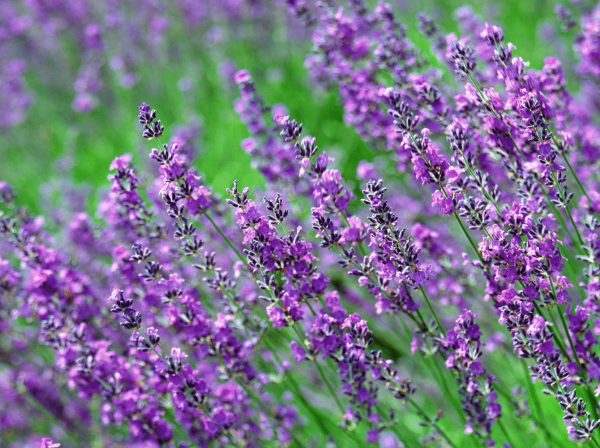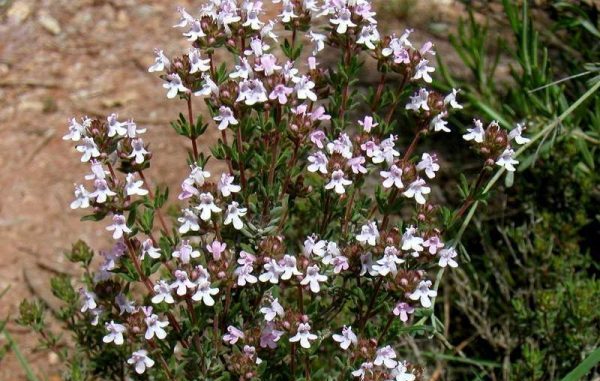Planting and caring for thyme in the garden
Content
Varieties
Thyme varieties have an incredible amount, every year there are only more of them. Let's take a look at the most popular varieties that can be planted outdoors in your garden and which do not require extra time and effort to take care of. Flea is a small bush with leaves 1-1.5 cm wide and neat purple inflorescences. The flowering period is June-July.
Common - a short bush with small leaves, pubescent on the underside. Medicinal plant, with white or red inflorescences. Lemon-smelling - hybrid thermophilic variety. Medium-sized plant with variegated round leaves.
Dorflera thyme is a non-resistant variety with gray-pink inflorescences and pubescent leaves. Subarctic - undersized plant, semi-shrub. Flowering occurs in mid-June, blooms with lilac inflorescences.
Early - undersized fluffy shrub with small leaves of light green color. During flowering, lilac inflorescences bloom, forming a carpet.Creeping is a ground cover variety that forms a dense carpet with pink or white inflorescences.
Siberian is a ground cover shrub with a developed rhizome. Blooms all summer with numerous pink inflorescences. Best suited for vegetative propagation. Japanese is a ground-creeping shrub that blooms in August. Pink flowers with a thick aroma look good in mixborders.
Video "How to plant thyme correctly"
This video provides instructions for planting thyme seedlings in a garden plot.
Landing
Outdoors, thyme prefers to grow in full sun and dry soil. A prerequisite for good growth is soil drainage. Prefers neutral and alkaline soil.
Planting thyme in the garden occurs in early spring. An option with planting in late autumn is possible, but in this case, make sure that the seedlings have a well-developed root system. In early April, start preparing for planting. Dig up the soil to get rid of the lumps, fertilize it with urea. Then sprinkle the seeds, and cover the top with a centimeter layer of sand.
Keep in mind that there should be at least 40 cm between the beds so that the plant has room to grow. After sowing, cover the beds with foil. The best temperature for planting is from 20 ° C, so it will take 14-15 days for seedlings.
If you decide to plant seedlings, then you should start in the second half of March. The seedlings must be at least 70 days old before they can be planted in the ground. Distribute the seedlings in the beds, sprinkle with river sand, that is, repeat all the steps from the seed option. More care of the seedlings is not needed.
Reproduction
Before planting thyme, you need to prepare it. Plant propagation occurs in two ways: with the help of seeds and vegetatively.Both options have their advantages and disadvantages, so it is not possible to definitely recommend one.
It is worth propagating by seeds if you want to arrange a very large flower bed in the garden. Prepare a container and neutral soil, it is best to mix peat with sand. You need to plant the seeds not very tightly, trying not to deepen into the soil, regularly spray with water from a spray bottle so that the soil does not dry out. After sprouting, lower the temperature to harden the seedlings and prepare them for transplanting. That's all the care of the seedlings.
Vegetative propagation is divided into two types: cuttings, dividing the bush. In the first case, separate the stalk from the shoot, plant it in a garden bed or in a greenhouse for growing. You can also plant a stem under the jar to moisturize from time to time. And after rooting - put in the main place. In the second case, that is, when dividing the bush, you should dig out the bush, divide the roots and plant these separate pieces where intended.
Care
Caring for thyme plantings will not cause any difficulties. The plant receives the main care together with fertilizers, which are laid in the ground during planting, as well as from sunlight. But if you want to make the conditions even more friendly, then apply a small amount of manure and hornmeal several times per season.
Planting care includes regular circumcision. In spring and late summer, prune the bushes down to the stiff part of the stem to shape and compact the planting. Since the plant does not require a large amount of moisture, in fact, an excess of water only spoils its life, then try to water it only in especially dry times. A big plus is that thyme does not need care in terms of diseases and pests - the plant is practically not subject to harmful effects, therefore it will grow in the garden and delight you without any extra effort.
Video "Growing thyme from seeds"
Video review on growing thyme or thyme seedlings from seeds, recommendations for caring for them in order to get a good harvest.




